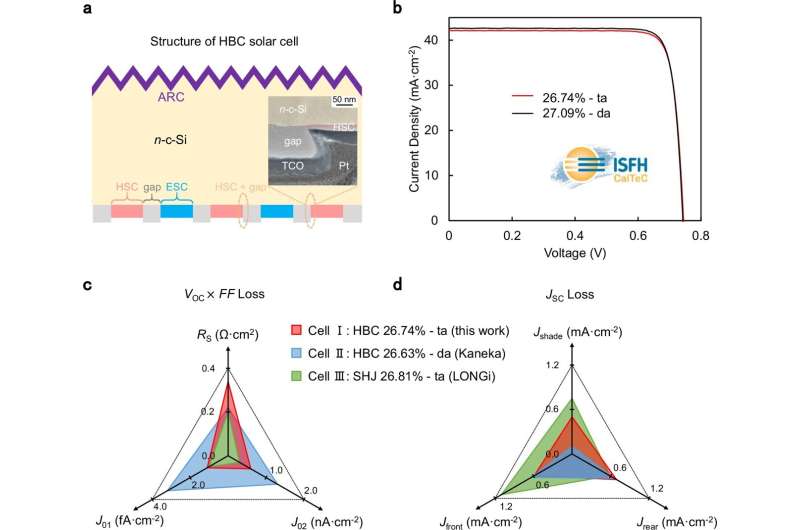
October 21, 2024 by Bob Yirka , Tech Xplore
Collected at: https://techxplore.com/news/2024-10-heterojunction-contact-solar-cell-efficiency.html
A team of engineers at China’s LONGi Central R&D Institute, working with colleagues from Shenzhen Campus of Sun Yat-sen University, reports that its heterojunction back contact (HBC) solar cell has achieved efficiencies as high as 27.09% during testing.
In their paper published in the journal Nature Communications, the group describes several techniques they developed to improve the efficiency of the solar cell and how it was constructed.
HBCs are a solar cell design type that involves putting the main working structure on the rear of the cell to allow more sunshine to strike the cell, thus improving efficiency over more standard designs.
Unfortunately, the design has been stymied by difficulties in managing the necessary charge carrier recombination. In this new effort, the researchers in China claim that they have overcome these difficulties to create a highly efficient solar cell.
LONGi announced the development of their new highly efficient HBC solar cell last December, but did not give many details—they said little more than that their work was groundbreaking and had been achieved using a newly developed laser tool. In their new paper, the team backs up their claims by noting that its efficiency has been verified independently by the Institute for Solar Energy Research Hamelin.
The research team made their cell by using a n-type monocrystalline silicon wafer. On the front, they applied an antireflecting coating. On the back, they divided the working area into four sections: a gap region, a hold-selection contact, an HSC plus gap and an electron-selective contact.
They also used a laser to ablate the stack—the transparent conductive oxide (TCO) layer was laid using magnetron sputtering. The team used another laser to ablate the gap, which prevents leaking. A final silicon nitride layer was added to prevent damage to the other layers while the cell was in operation.
The researchers tested the cell under what they describe as standard conditions, in which their cell achieved 27.09% efficiency. They also note that they plan to continue work on their cell, hoping to improve efficiency even further—they suggest that making a few changes should bump it to 27.7%.
More information: Genshun Wang et al, 27.09%-efficiency silicon heterojunction back contact solar cell and going beyond, Nature Communications (2024). DOI: 10.1038/s41467-024-53275-5
Journal information: Nature Communications

Leave a Reply